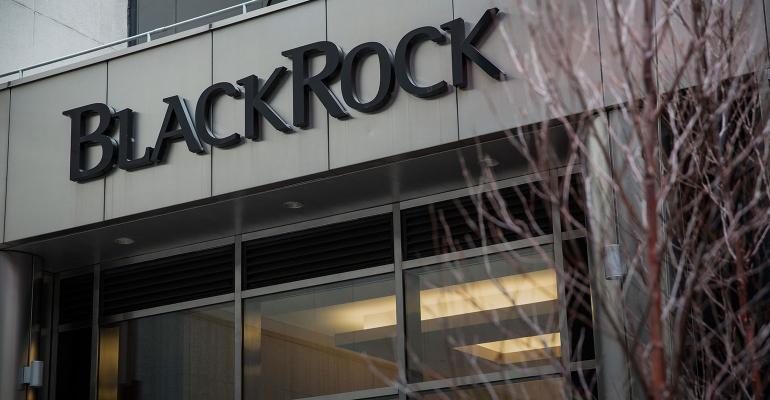(Bloomberg) -- Investors have poured more than $20 billion into US fixed-income exchange-traded funds so far this year. As the dust settles from the bond market’s worst year on record, ETFs focused on safe and simple Treasuries have attracted the bulk of the money. Stephen Laipply, the US head of fixed-income ETFs at BlackRock, explains this state of affairs on the latest episode of the “What Goes Up” podcast.
Here are some highlights of the conversation, which have been condensed and edited for clarity. Click here to listen to the full podcast on the Terminal, or subscribe below on Apple Podcasts, Spotify or wherever you listen.
Listen to What Goes Up on Apple Podcasts
Listen to What Goes Up on Spotify
Q: How are you thinking the rest of the year will play out in fixed income?
A: It’s been a bumpy ride. Last year was the worst bond record we’ve seen in probably 40 years. It was incredibly challenging. Investors have been lulled into a bit of, ‘well, rates are low for long and maybe low forever.’ That changed very, very dramatically last year. Investors were looking forward to this idea that ‘2023, we’re at these higher yields, it’s great, I’m going to allocate, I’m going to fix my 40,’ so to speak. And then all of a sudden we got this slew of very positive data and that made everybody rethink. It does feel like people rethink this — and maybe overthink it — every week, if not more frequently than that. I’m a little more sanguine on this. There is a limit to how high rates can go.
The Fed is going to be watching the data closely. We have maintained a view consistently that inflation was probably not going to go down in a straight line. That’s just what we’re seeing now. There are going to be some bumps along the way. It’s possible that they may hike a little bit more than what was originally expected, and then they may hold rates at that elevated level. You’re going to see the market trying to find a level here. And I do believe that there is a limit to this because, whether people believe it or not, ultimately these hikes will impact the economy. They will take hold.
Q: You guys are saying that adviser 60/40 portfolios are under-allocated to fixed income by 9%, and now is a once-in-many-years opportunity to rebalance portfolios. Tell us about that.
A: If you think about the last decade, we’ve had quantitative easing. If you look at where the 10-year (yield) bottomed out, it was 50 basis points, which is remarkable. The two-year bottomed out somewhere in the teens. So a lot of investors decided to stay out of the market. Or, they had to take on a lot of additional risk to get that yield. So whether that was overweighting high yield in that traditional part of the portfolio — where maybe they would’ve preferred higher-quality assets but they had to have the income — or things like alternatives and private credit, private equity.
Now investors are looking at this market — the public fixed-income market — and realizing that they can quote-unquote fix their 40 by de-risking it to varying degrees. So, you don’t have to be the majority in high yield to get a certain yield target. You can allocate to the front end of the Treasury curve and get yields that you were seeing at some point in the high-yield market. So it really is an opportunity to get back to what that 40 was supposed to do, which is diversify your risk assets. And then you think, I have the S&P 500, what do I want to hold against it? A very simple world would be, ‘I’ll hold long-dated Treasuries against it,’ with the reasoning that if the equity market sells off, long Treasuries will probably rally.
Q: Are concerns about the debt ceiling impacting the short end? How do you see that issue playing out this year?
A: We’ve seen this movie before, where it has happened, where we were actually downgraded and everything. There is a little bit of it that is in there. If you look at, for example, credit-default swaps. I haven’t looked at the levels lately, but there was some of that risk being slightly priced. That concern could come forward much more as we head toward the summer, which is a critical time. So I would say it’s not dramatically impacting the front end yet. Could it? Sure.
--With assistance from Stacey Wong.




